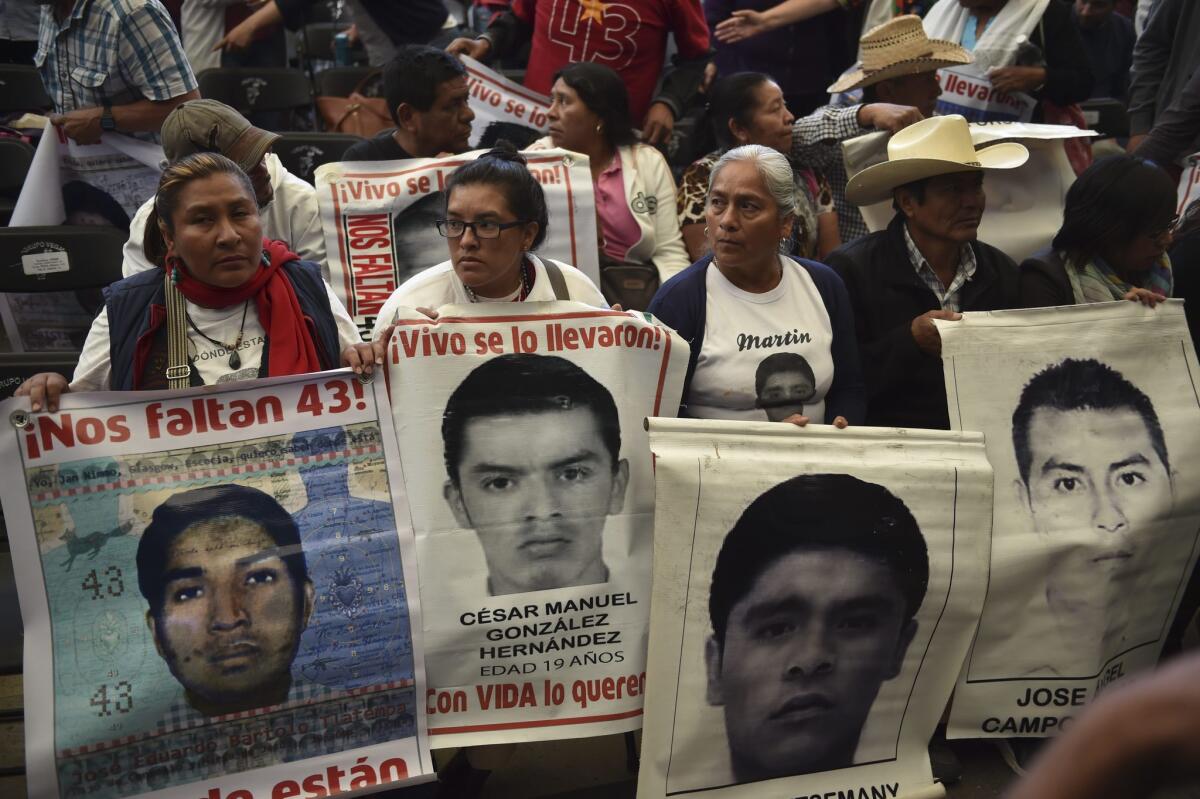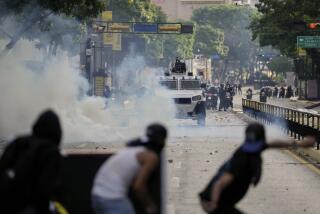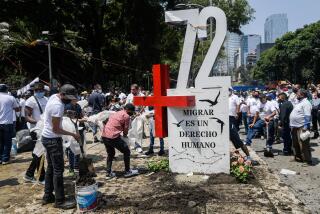Mexican police tortured suspects in case of missing students, report says

Parents and other relatives of the 43 missing students from the Ayotzinapa teachers school attend the reading of the final report from the Interdisciplinary Group of Independent Experts in Mexico City on Sunday.
Reporting from Mexico City — There is strong evidence that Mexican police tortured some of the key suspects arrested in the disappearance of 43 students, according to a report released Sunday by an outside group of experts.
The Inter-American Commission on Human Rights group of experts says a study of 17 of the approximately 110 suspects arrested in the case showed signs of beatings, including, in some cases, dozens of bruises, cuts and scrapes.
One suspect said he was nearly asphyxiated with a plastic bag, and medical studies showed another had been slapped on the ears so hard his eardrums broke and his ears bled.
The Mexican government recently released documents suggesting investigations had been opened against police and military personnel, but authorities have not answered requests about whether anyone has been arrested or charged.
The 43 students at a radical teachers’ college have not been heard from since they were taken by local police in September 2014 in the city of Iguala, in Guerrero state.
The allegations of torture could put in danger any chance of convictions one of the highest-profile human rights cases in Mexican history, especially because the government’s version of events — that corrupt police handed the students over to drug gang members who killed them and burned their bodies at a trash dump — hangs in large part on the testimony of some drug gunmen who now say they were tortured into confessing.
“It is a lie the way they said they caught us,” said Patricio Reyes Landa, alias “El Pato,” said in testimony made public by the experts’ report. “They went into the house, beating and kicking. They hauled me aboard a vehicle, they blindfolded me, tied my feet and hands, they began beating me again and gave me electric shocks, they put a rag over my nose and poured water on it. They gave me shocks on the inside of my mouth and my testicles. They put a bag over my face so I couldn’t breathe. It went on for hours.”
The group complained the government was slow to deliver some of the evidence it had asked for; it criticized government prosecutor’s investigations as flawed and incomplete; and suggested the government wanted to stick to its version, without investigating possible involvement by federal police and the army.
For example, the report said, the roadblocks set up on local highways around the city of Iguala on the night of the disappearances were far more extensive than previously thought. The roadblocks were apparently coordinated by the Guerreros Unidos drug cartel to trap rivals; the gang may have thought the students were part of a rival cartel.
The report criticized the forensics investigations of human remains and evidence of fire at the garbage dump in the town of Cocula, Guerrero, saying that prosecutors had provided little evidence there ever could have been a fire a big enough at the site.
“It is clear that there was a latent rejection of any version other than the burning of the students at the Cocula dump, and they turned back to that scenario time after time, without investigating other police forces or state actors,” the group said in its final report. Its mandate expires at the end of this month, and it leaves Mexico with the crime still largely unresolved; only one student has been identified from charred bone fragments found in a river near the dump.
The foot-dragging by prosecutors “cannot be seen as partial or improvised obstacles,” said the report. “These different situations aren’t casual barriers, they are structural barriers to the investigation.”
The report also found that one student sent a message to his parents from his cellphone hours after he had supposedly been killed.
But the “significant evidence of torture and abuse” of the suspects was the report’s most damning element.
For example, the medical reports on one suspect whose testimony was key for the government’s case, Agustin Garcia Reyes, claimed he had one injury, a bruise, after marines took him into custody. But hours later when he was turned over to civilian prosecutors, they said he had 30 bruises, scrapes and scabs.
More to Read
Sign up for Essential California
The most important California stories and recommendations in your inbox every morning.
You may occasionally receive promotional content from the Los Angeles Times.









